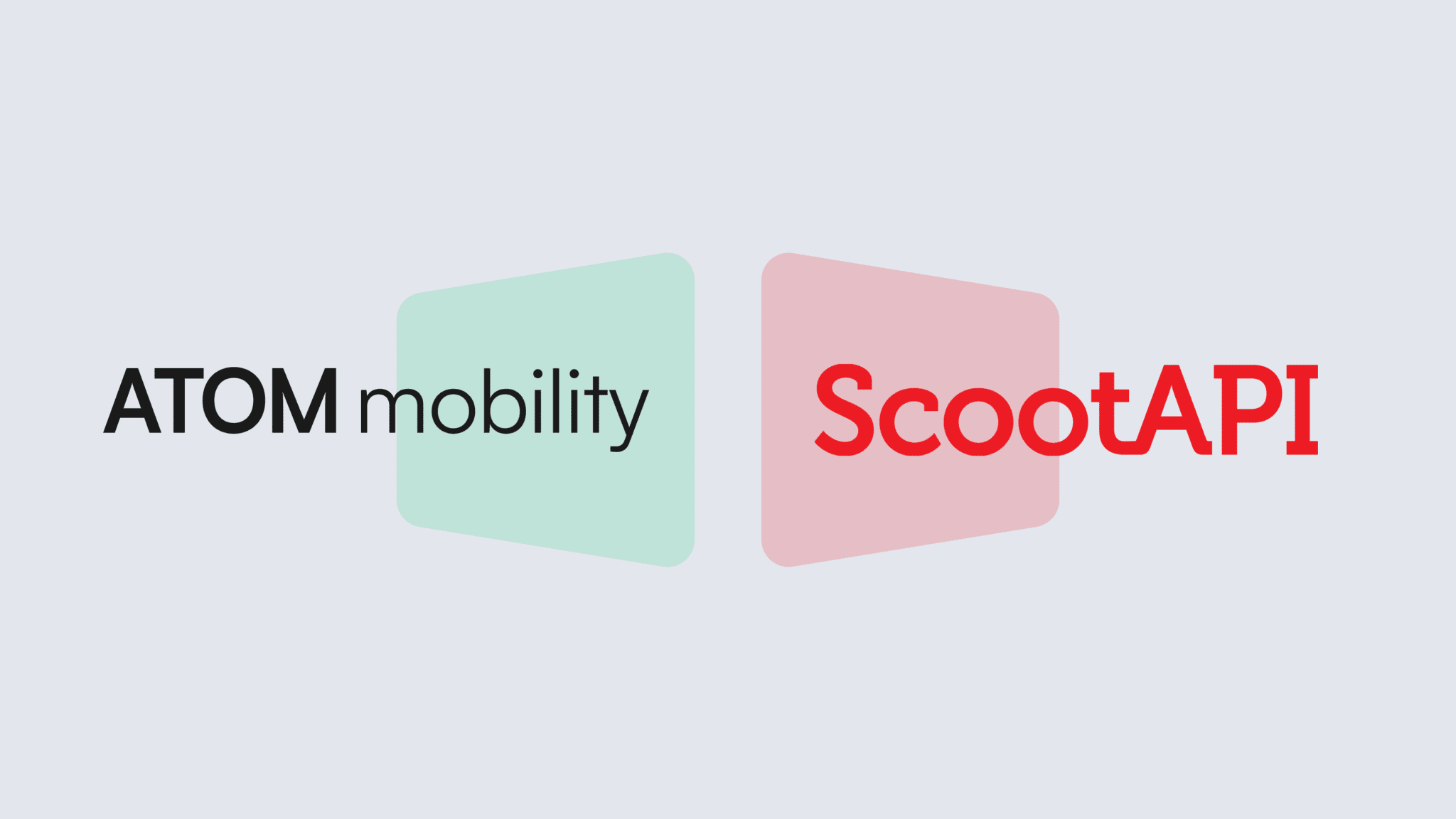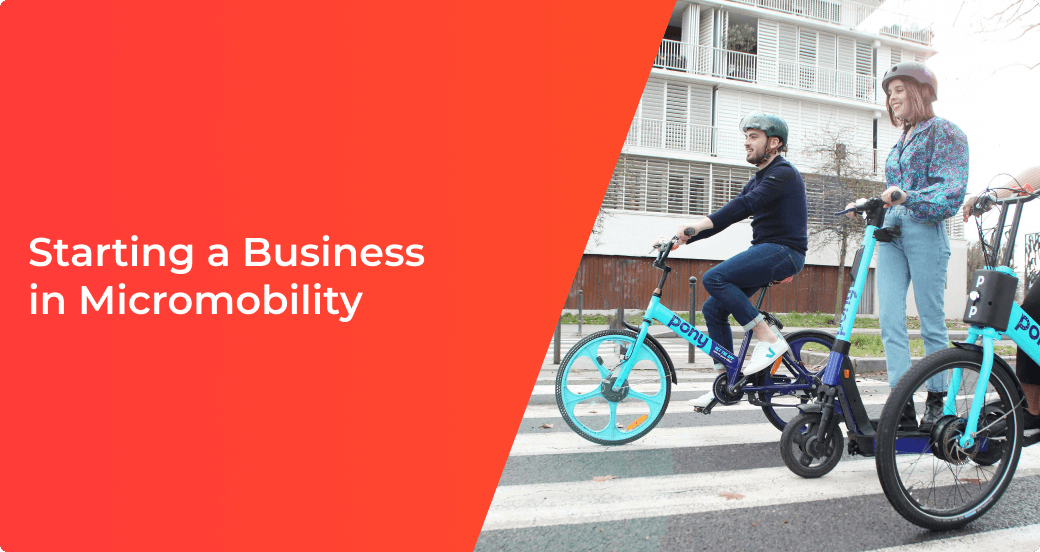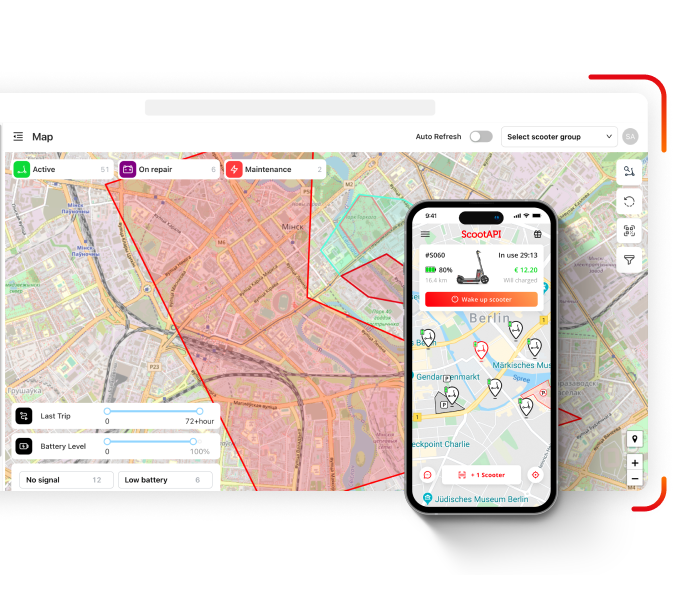Based on our experience working with clients, at first glance it seems to many that launching their own sharing business requires just scooters and a user app. Few people think about an admin panel, the importance of choosing specialized devices, and agreements with city authorities read more on the page “(How to start e-scooter business”). In reality, before the launch, an entrepreneur will have to solve a lot of issues every day — from negotiations with the manufacturing plant and selecting an SMS-provider to registering the app and integrating payment systems.
Based on our successful experience launching over 15 companies worldwide, today we want to shed light on 10 pitfalls — issues that may arise when starting a sharing business. These are often overlooked and rarely discussed, but these factors can slow down the process and hinder a timely launch. If you’re just starting your business and aiming to launch in the coming season, this article is definitely for you.
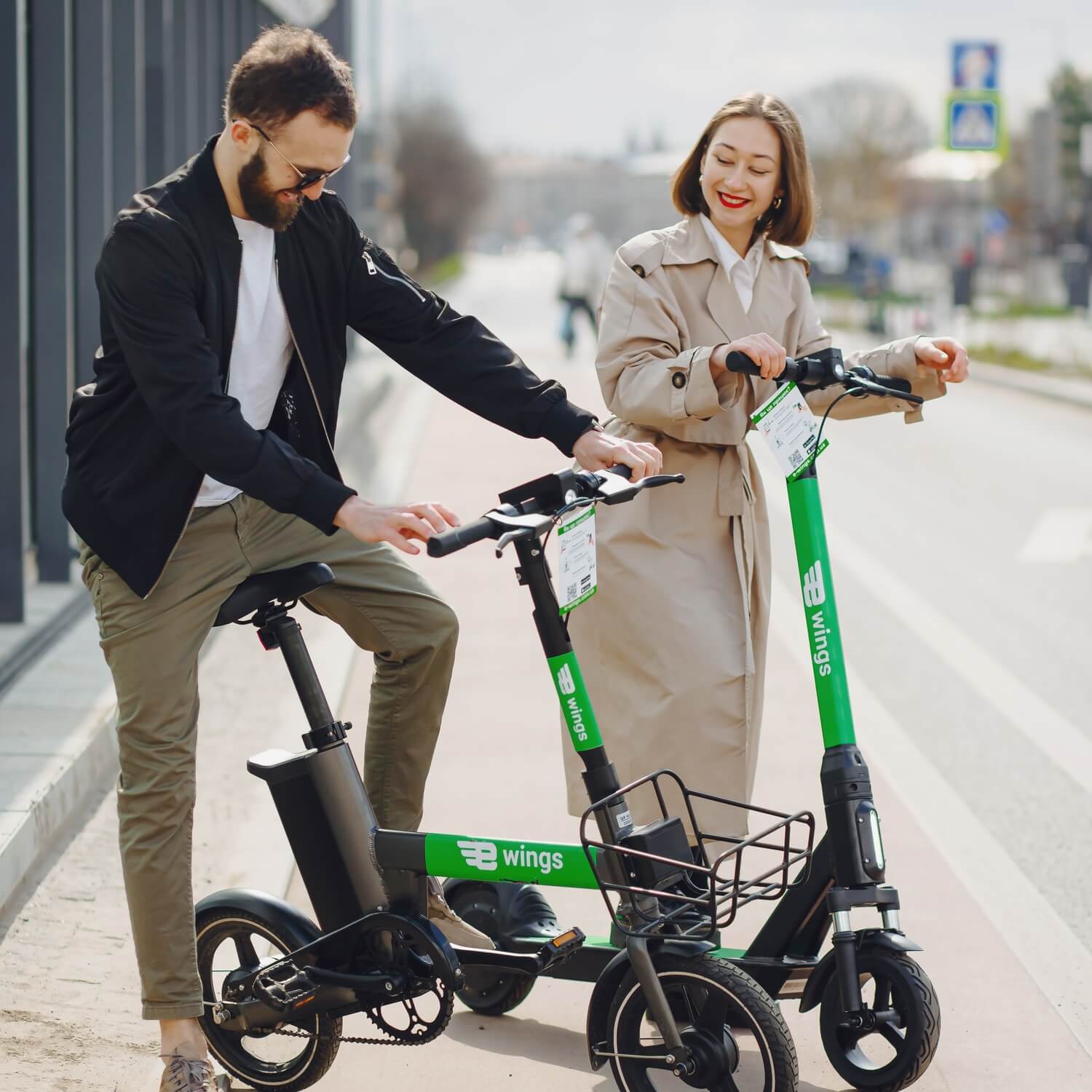
1. Ordering electric scooters
Selecting and ordering of scooters are one of the most labor-intensive and time-consuming stages, which starts long before the software development. From the moment of collaboration with the developer, an entrepreneur needs to have a clear understanding of the quantity of transport for the future sharing service. However, clients often fail to realize that specialized scooters are required for kick-sharing and they are in no hurry to look for a supplier.
Frequently, it-service providers assist in selecting scooters. For example, ScootAPI helps customers choose equipment thanks to the experience of 15+ startup companies. We explain why it is important to purchase high quality devices and offer several options for manufacturing plants. However, negotiating with suppliers remains the responsibility of the business owner.
Negotiations with Chinese manufacturers typically take from two weeks to two months. This period is essential for settling questions about quantity, cost, scooter specifications, as well as preparing packaging lists and delivery terms. You should also take into account the time for payment to a Chinese bank, which takes 3–4 banking days. Without a 50% prepayment, Chinese manufacturers will not commence the production of your devices.
2. Equipment Manufacturing
The production process typically takes 90 days, depending on the quantity of electric scooters, but this extended timeframe can be optimized. While the factory is producing the equipment, proceed with the following steps necessary for launching a sharing business:
Choose a mobile operator. If you decide on a mobile operator in advance, purchase SIM-cards and send them to the manufacturing plant by mail, the contractor will be able to set up scooters on the server still at the factory. When the devices arrive in your country, activating the SIM-cards is sufficient — the devices will instantly connect to your platform and be ready to work.
Order scooter branding. Another way to speed up the launch is to pre-brand the electric scooters directly at the factory. Typically, when ordering 500 units or more, Chinese manufacturers offer this service for free. However, for this it is necessary to have a ready-made design and brand logo at the production stage.
Choose the type of ioT-device. The ioT-device acts as the “brain” of the scooter, transmitting data from the device to the server. Since all ioT-devices operate on different protocols, it’s important to decide on the type during the development stage. This allows programmers to adapt the software quickly to your park’s usage.
3. Transport Delivery
An essential aspect often overlooked is the delivery of our park. On average, delivery times range from 1 to 3 months, depending on the destination country.
There are two main delivery options:
- Ex Works (EXW) Delivery. This method involves self-pickup, where a third-party logistics company picks up your order directly from the factory doors, loads it onto a ship, and the vessel delivers it to the destination.
- Free On Board (FOB) Delivery. In this case, the factory itself delivers the goods to the ship. This option is less common, and additional coordination with a third-party logistics company may be required to organize the delivery process with the manufacturer.
Thus, it takes from 5 to 8 months just to get scooters, without which it is impossible to start sharing. However, during this period, important tasks can be solved, including software development. Following our recommendations and starting preparations now will ensure you are ready for an immediate launch once the scooters arrive in your country.
4. Creating your own brand
For the development of the future application to commence, it is necessary to provide a brand book that includes the logo, brand name, signature colors, and fonts. Without these foundations, the software development process will be at a standstill.
Initiating this step concurrently with the manufacturing process proves to be more effective. In this case, you can arrange for scooter branding services directly at the factory. Simultaneously, while the transport is in transit to your country, developers can work on creating the application for your upcoming sharing service.
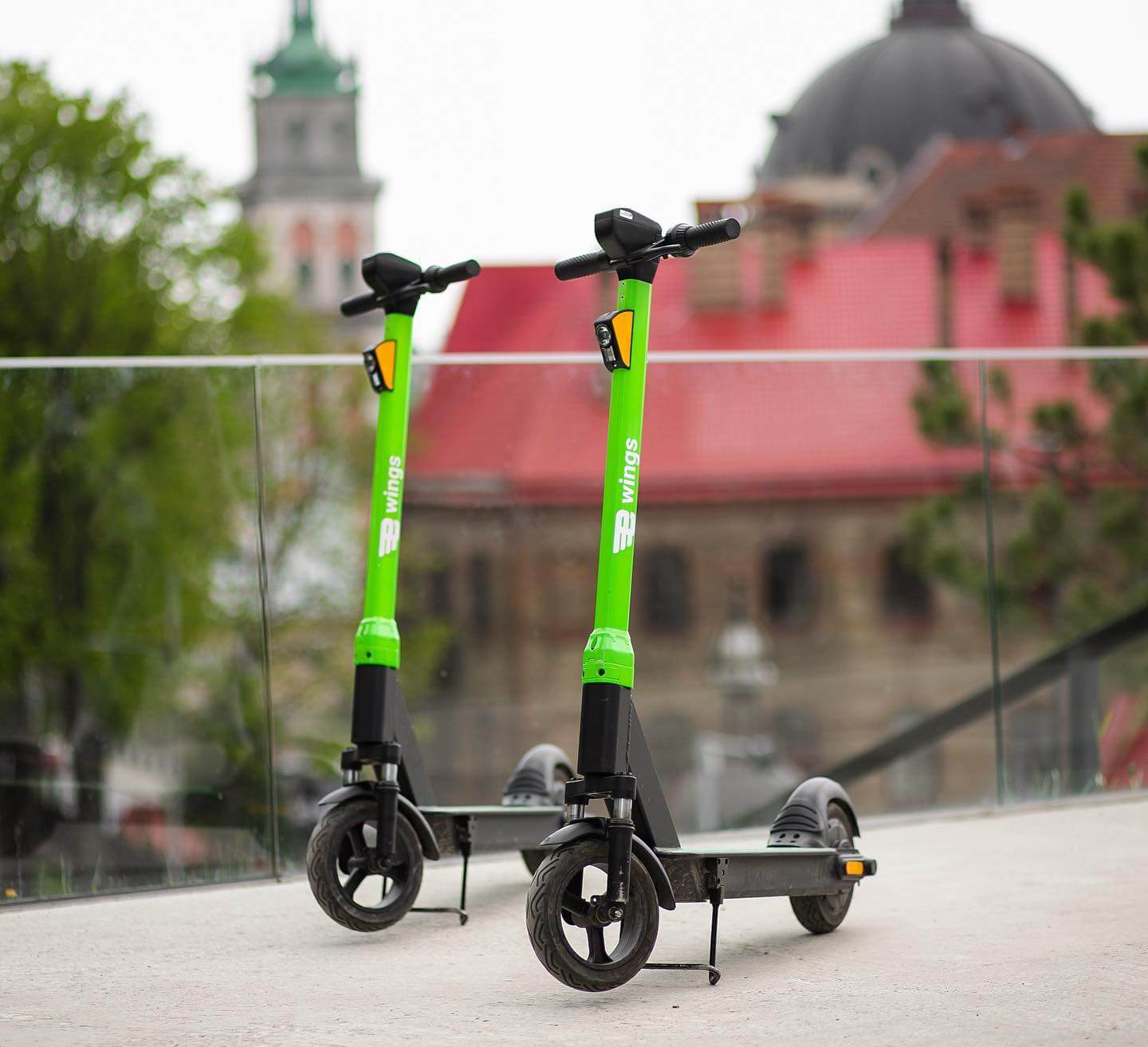
5. Account registration on Google Play and AppStore
In order for users to install your application and utilize the scooter-sharing services, it is essential to register it on Google Play and AppStore. Delaying this step could make launching in the peak season impossible.
The registration process on Google Play is quite simple and takes around 2 weeks. However, with AppStore, the process is more complicated: company registration requires a DUNS number — an international business identifier. The procedure is simple, but takes from 2 weeks to 2 months. We recommend initiating the registration during the manufacturing and scooter delivery stages to ensure everything is ready for launch.
Often, software development firms assist with the registration of accounts on Google Play and AppStore. For instance, at ScootAPI, we can take on such a service, including communication with service representatives. However, it’s important to note that Apple might request verification of certain information through a call with a company representative, and only the business owner can provide such confidential information.
This is not the only reason why the owner’s personal involvement in the account registration is crucial. There are two types of accounts: developer accounts and organization accounts. A developer account provides access to only one person. In such a case, the developer will need to consistently request SMS-codes from the owner for login, causing inconvenience, especially across different time zones. An organization account, which can only be created by the business owner, allows adding multiple users for account management and avoids the need to share passwords.
6. Selection of SMS-providers and SIM-cards
An SMS-provider is an IT-service used to send messages to mobile phones, essential for delivering one-time passwords to users when logging into the application. SIM-cards inserted into scooters and transmit information about their status and alerts to the server. These data are reflected in the company’s admin panel, allowing for real-time tracking of the transport park and prompt response to emergency situations.
As mentioned earlier, it is more profitable to decide on the mobile operator and acquire SIM-cards during the manufacturing stage. Regarding the SMS-provider, it is preferable to choose the service during the application development process, before its publication on Google Play and AppStore. This step won’t take much time, around 1–7 days, but it is critically important for the launch and can slow down the entire process if it is not completed on time.
7. Connecting payment systems
From ScootAPI’s experience, the payment system is often the dark horse in scooter sharing, causing delays in the launch. After all, without successful payment system integration, even app testing becomes impossible.
The process of selecting a payment system and negotiating with the bank varies significantly from one haring country to another. On average, one should allocate at least one month for registration in the payment system, and preferably two. This is because the bank’s security department conducts a company check, which can take up to two months. The procedure also includes contract signing, and some banks may require a deposit to use their services.
Moreover, the integration speed of the chosen payment system depends on the developers’ experience. If the developer has previously worked with the selected payment system, integration will not take much time. In the case of a new system, developers will need time, and the speed depends on the availability of documentation, technical support, and the internal features of the system.
8. Application Publication
Once the contractor and business owner have finalized the design and functionality of the application, the publication process typically takes only 1–2 days. However, you should take into account the features of third-party sites that may affect the speed of the process. After clicking the “publish” button, the application must pass a review on Google Play and AppStore. While Google Play typically completes the review within 1 day, the check-in process on the AppStore may take up to 3 days.
9. Preparing the Landing page and Legal documents
At first glance, simple routine tasks can prove to be crucial for the successful launch of scooter sharing. Having the landing page with documents ready significantly streamlines the application publication process and facilitates coordination with the bank on payment system issues.
The landing page is a web page where links to download the application and all necessary documents will be placed. It’s advisable to take care of the landing page even before app publication since Google Play and AppStore may request a link to the landing page.
It’s also important to prepare legal documents in advance, including rental
agreement, terms of service and others. These standard documents are recommended to be created before choosing the payment system, as the bank will require them when entering into an agreement.

10. Creating QR-сodes and connecting scooters
Anyone who has rented a scooter through a sharing service knows that each device has a unique QR-code. It functions as a virtual key: each QR-code corresponds to a unique serial number of the device in the database, allowing the system to identify the means of transportation when scanned and execute all necessary commands and requests.
There are two types of QR codes:
- Simple QR-codes. Users scan the code through the application, and the scooter is activated.
- Dynamic QR-codes. If the user doesn’t have the application installed, the system redirects them to the corresponding store (Google Play or the App Store) for download when scanned. If the application is already installed on the smartphone, it automatically opens, similar to a regular QR-code.
Simple QR-codes can be prepared during the scooter production stage. To create dynamic QR-codes, the application must already be published, so it is recommended to generate dynamic codes right after publication while the application is still in test mode.
________________________________________
ScootAPI’s team is confident that launching an electric sharing service in the desired season is a real goal. We are ready to support you at every stage, providing the necessary solutions and advice for a successful launch.
If you don’t have a scooter park yet but want to be among the first in the new season, it’s best to start preparing now, as the success of your business depends on it. Need a free consultation? Submit your request, and we will provide guidance on any questions and help you plan your time most efficiently.
Also, our website offers a free demo version of the application. Follow the links on Google Play and AppStore to explore ScootAPI’s capabilities today. Let’s build a successful electric scooter sharing business together!

